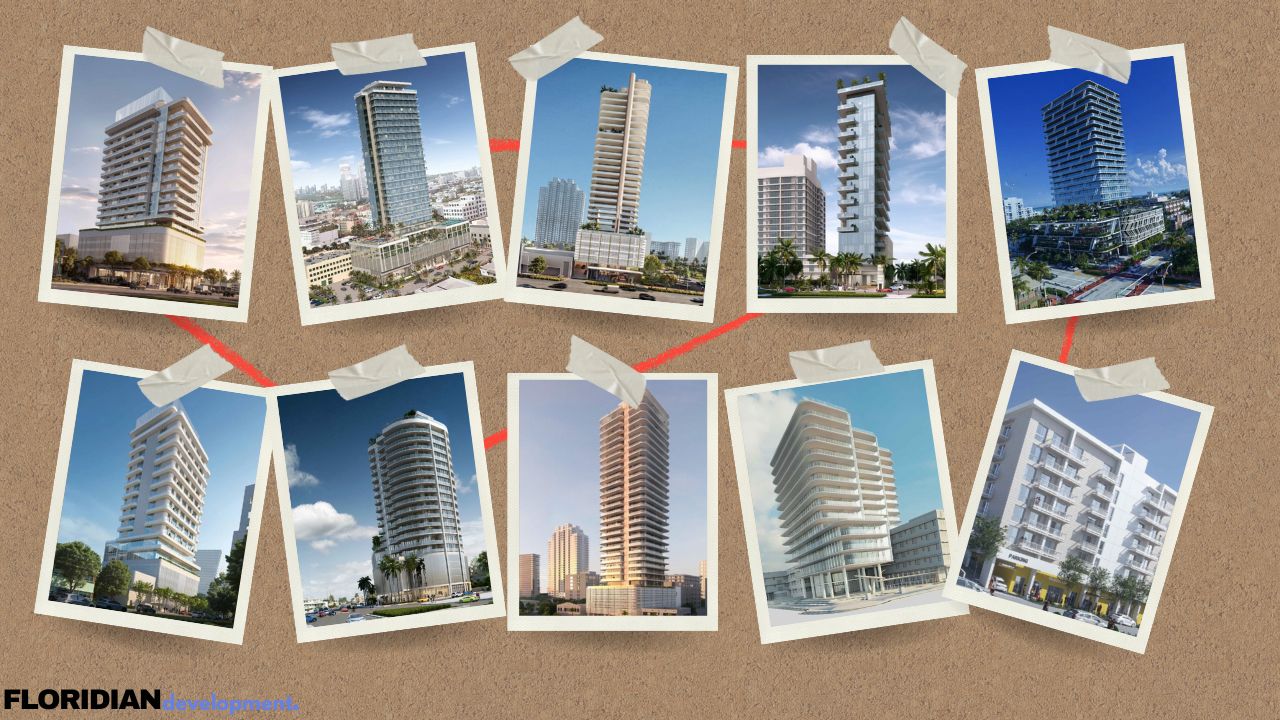
Miami Beach faces a turning point in its development future. After passing in the State’s legislator and undergoing multiple revisions, the state’s Live Local Act, designed to fast-track workforce housing, has catalyzed a wave of development proposals across the city. From North Beach, Normandy Isle, South Beach and other iconic neighborhoods, developers have proposed buildings ranging from 8 to 31 floors. While the law aims to address Miami Beach’s workforce housing needs following a historic and recent population decline, it has also fueled heated debates over balancing growth with historic preservation, creating pushback from both neighbors and local politicians.
Foreshadowing a Future
Controversy first arose after the Live Local Act began with a heated proposal: plans to redevelop the Clevelander with a high-rise. Owned by the Jesta Group, the project originally called for a high-rise building featuring workforce housing, immense commercial space, and residential units above. The plan immediately drew pushback from preservationists, anti-development activists, and local officials concerned about the scale and impact on the iconic Art Deco corridor. In fact, former Mayor Dan Gelber called it the “worst idea ever,” adding that “the Jesta Group should be ashamed.” In response, Jesta Group revised the proposal, lowering the height while retaining the affordable housing component, though controversy continues over the project’s compatibility with the surrounding historic neighborhood.
Despite the backlash, the Clevelander was a pioneer regarding the Live Local Act, signaling the beginning of a new wave of development in Miami Beach’s most well-known neighborhoods. Following the lead, developers like Russell Galbut and his firms GFO Investments and Crescent Heights, as well as multiple out-of-state developers, have begun proposing high-rise projects along Alton Road and other major corridors. Whether these developers succeed depends on the approval process, as well as compatibility with historic preservation.
The Incentives Behind It All
The influx of development proposals is not coincidental. The Live Local Act offers developers several incentives to promote workforce housing across Florida. For one, qualifying projects can move through the approval process administratively, avoiding lengthy public hearings as long as they comply with standard regulations. Developers can also take advantage of the maximum density allowed in any municipality, utilize certain height bonuses, and build up to 150% of the highest FAR permitted in the jurisdiction. Beyond zoning benefits, the state may grant tax incentives to projects that meet affordable housing requirements. These benefits are key to the influx of developments, as they allow multiple projects to pencil.
In exchange for these advantages, developers must designate at least 40% of units as workforce housing, defined as units restricted to households earning no more than 120% of the area’s median income. Additionally, at least 65% of the building must be devoted to residential uses, with the remaining 35% available for non-residential uses such as commercial or office space.
Critics, however, have argued the lack of affordability seen in these projects According to Bilzin Sumberg, developers in Miami-Dade can charge as much as $2,604 for a studio apartment or $3,867 for a three-bedroom unit: prices that remain out of reach for many households. This rent limits come entirely from the act’s laxed income limits placed at 120% AMI. On the other hand, supporters of the Live Local Act have strongly argued that increasing the housing supply and situating units closer to jobs will ultimately reduce traffic, ease housing costs, and improve overall quality of life in local communities.
Because the Act allows projects on industrial, commercial, or mixed-use parcels, developers have focused on Miami Beach’s major corridors, including Collins Avenue and Alton Road. In a public records request to Miami Beach, here are the most recent Live Local Act projects submitted to the city thus far, beginning with 740 Alton Road.
740 Alton Road
Plans by GFO Investments, affiliated with developer Russell Galbut, call for a 28-story building along Alton Road. There will be 100 units, 1,494 SF of retail, 2,134 SF dedicated to a private club, and 106 parking spaces for residents and retail patrons. 40% of the units will be workforce, translating to 40 out of the 100 proposed units. The building, designed by RSP Architects, will be among the tallest on Alton Road, measuring 410 FT to the highest point.
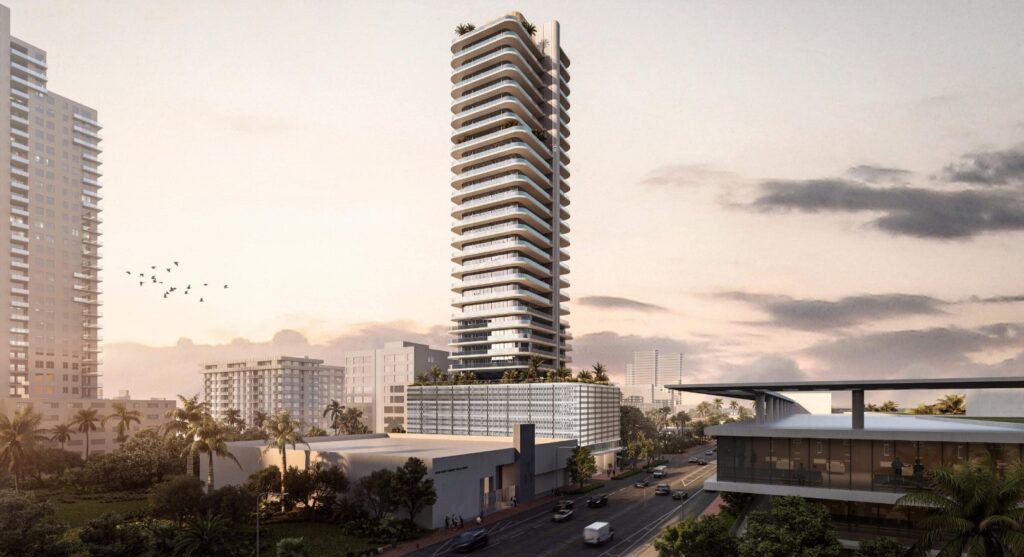

1826 Collins Avenue
Developers Lefferts and Crescent Heights are moving forward with plans for 1826 Collins Avenue, a 15-story, 223 FT tower that will bring 29 residential units to the area. Twelve of the units will be designated as workforce housing, meeting the Live Local Act’s 40% affordability threshold. The project also calls for 3,500 SF of office space and 37 parking spaces. The official architect is Built Form Architecture.
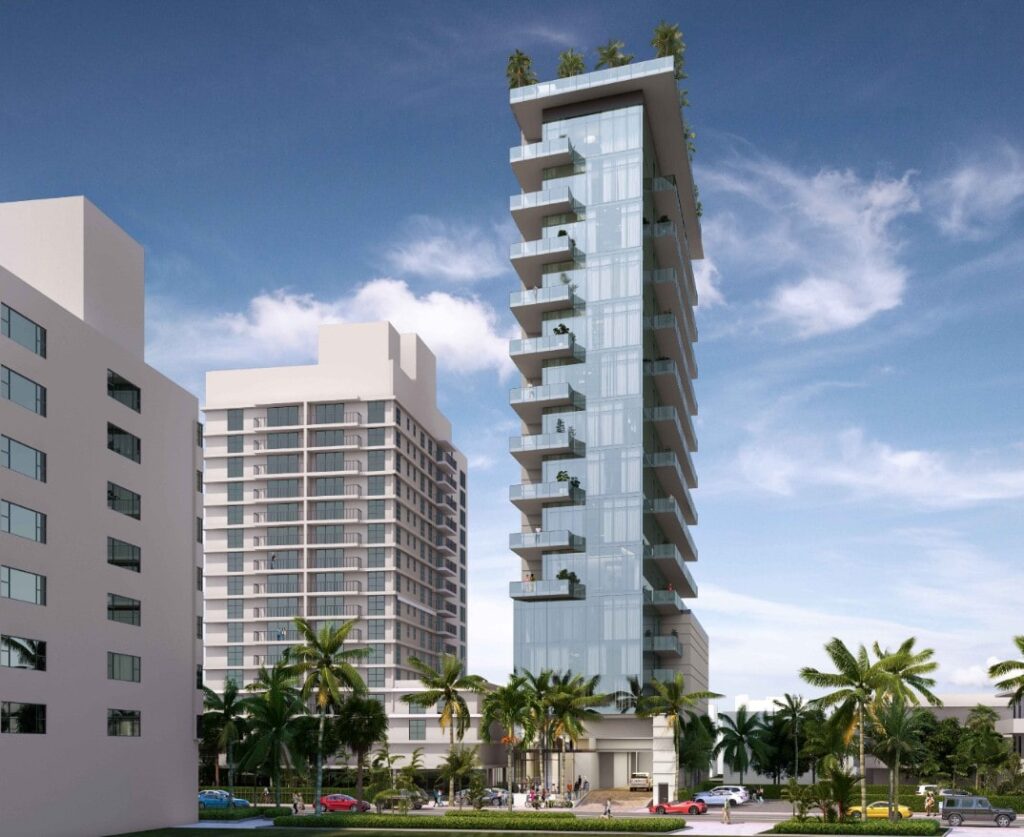
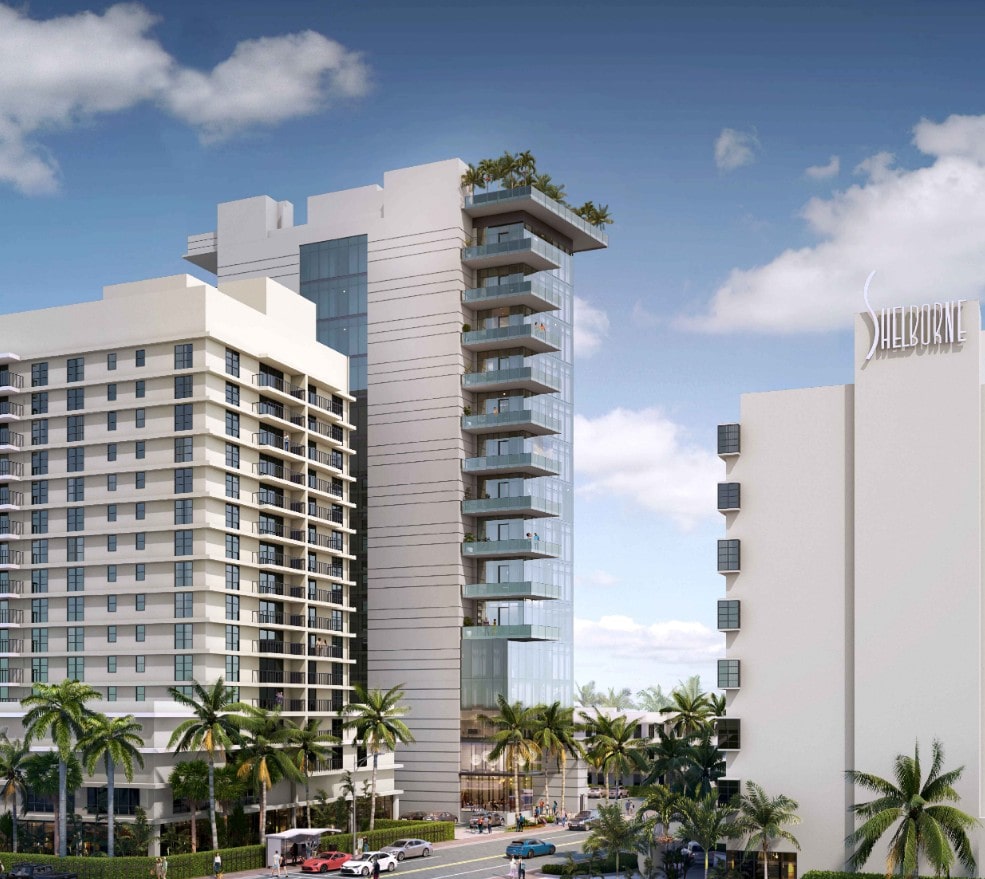
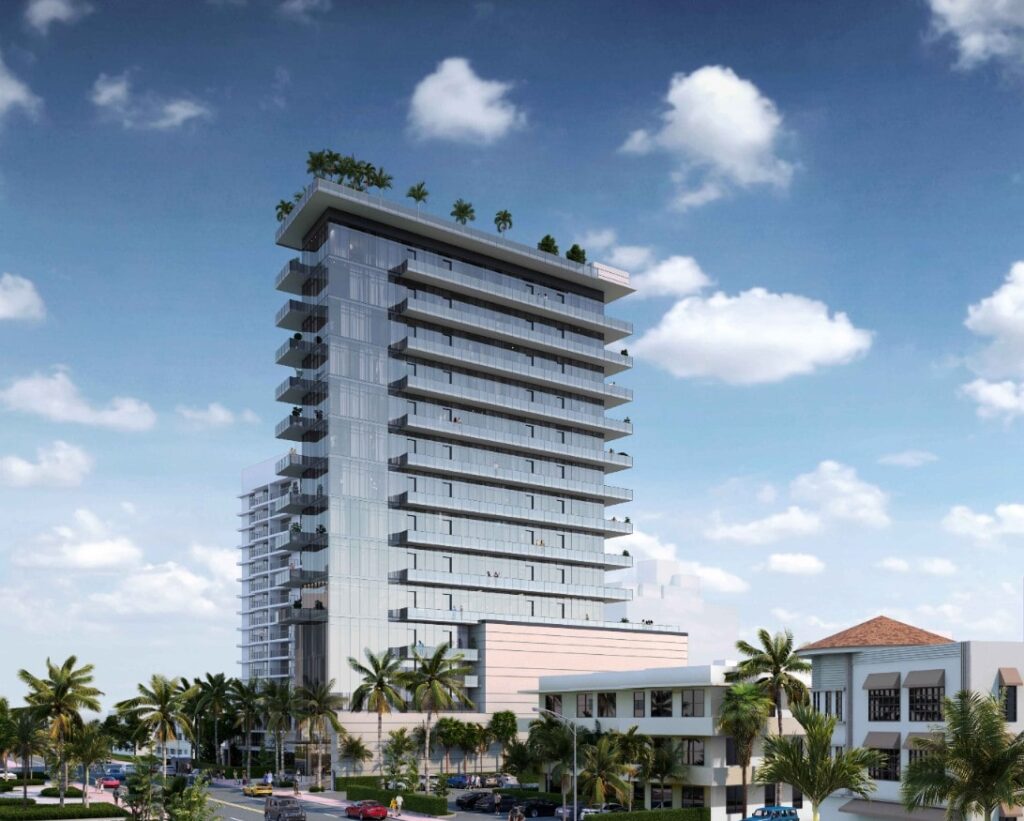
7401 Harding Avenue
Currently owned by Calvin Gaeta Development Co. Inc., the property is slated for a 170-unit high-rise, with 72 units (42%) designated as workforce housing. The building, designed by Urban Robot Associates, will rise 23 stories and stand 243 FT tall. On the ground floor, plans include 7,699 SF of commercial space, along with 174 parking spaces in the tower’s podium. Just months before proposing this high-rise, the developers presented to Miami Beach’s planning board a five-story mixed-use building with only eight units.


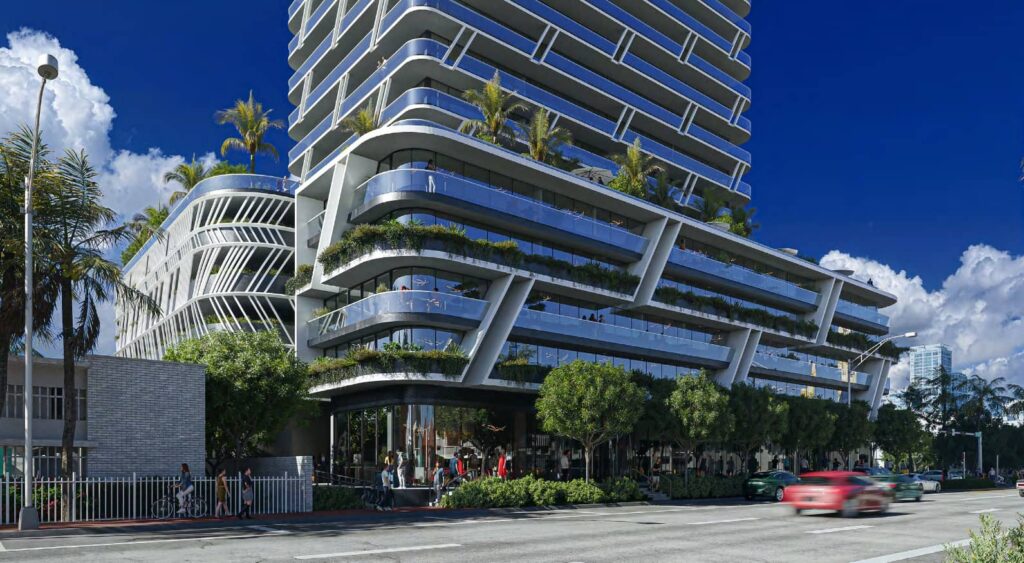
42 Collins Avenue
Proposed by Brooklyn-based 42 Collins Avenue LLC, plans filed with the city outline a 180-unit tower, with 72 units (about 40%) designated as workforce housing. All workforce units will be studio floor plans, a format common among Live Local Act projects. Designed by Built Form Architecture, the building is set to rise 28 stories and reach 374 FT in height. The ground floor will feature 3,700 SF of commercial space, with 194 parking spaces housed in a multi-story podium.
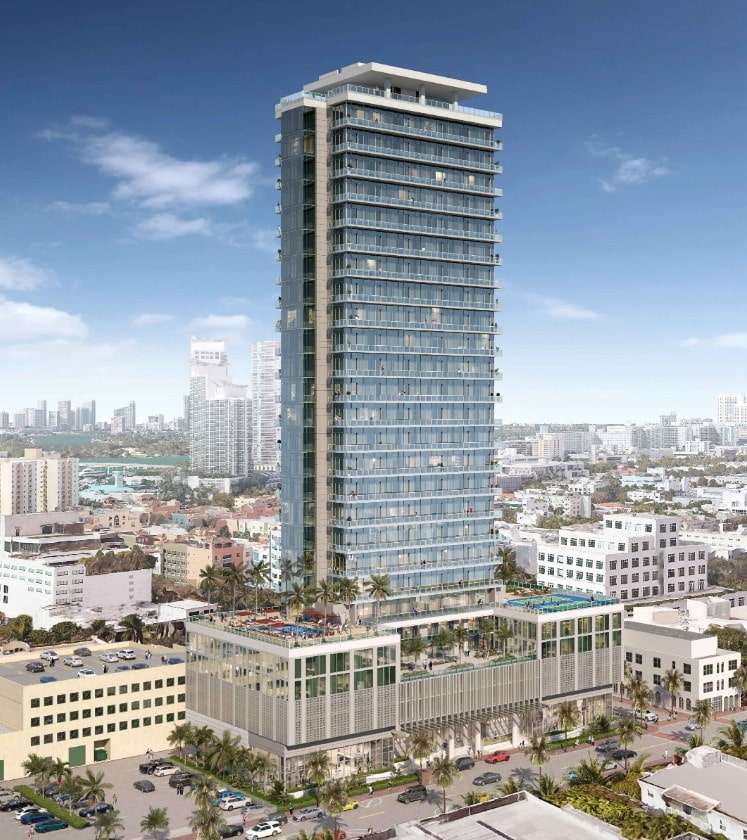
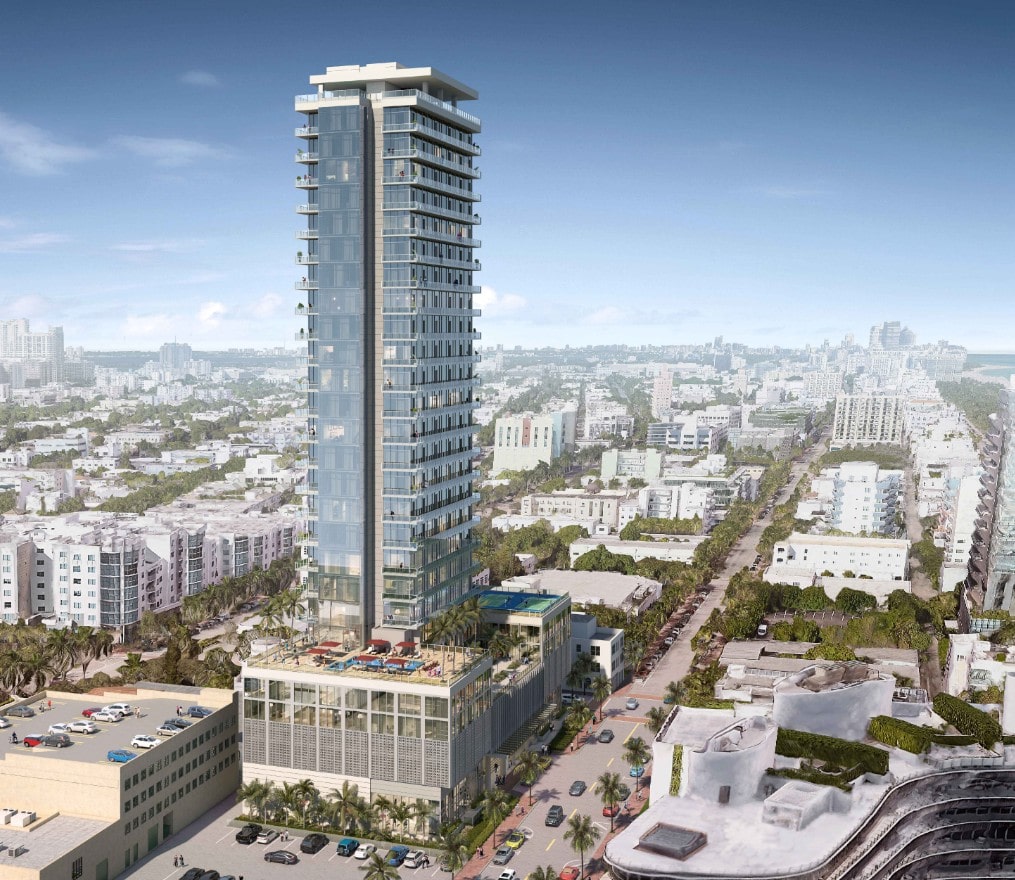
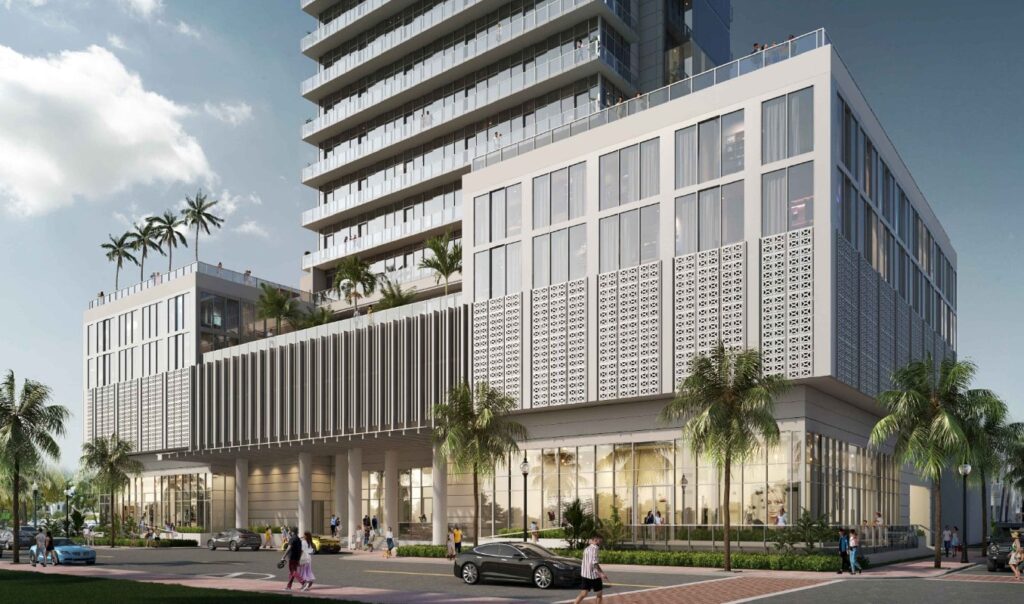
1575 Alton Road
Also proposed by Crescent Heights, 1575 Alton Road is planned as an 18-story tower with 92 residential units. 37 units, or around 40% of the units are workforce housing. The project will include 8,549 SF for either office or fitness center use, along with 87 parking spaces. While not the tallest Live Local Act proposal on Alton Road, the 225 FT building, designed by RSP Architects, will still make a notable mark on the streetscape and skyline.

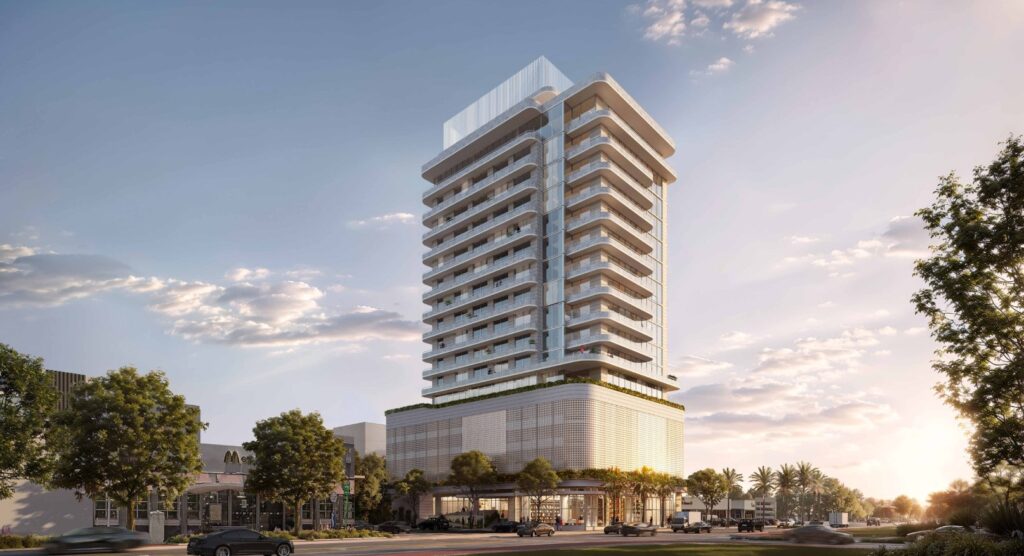
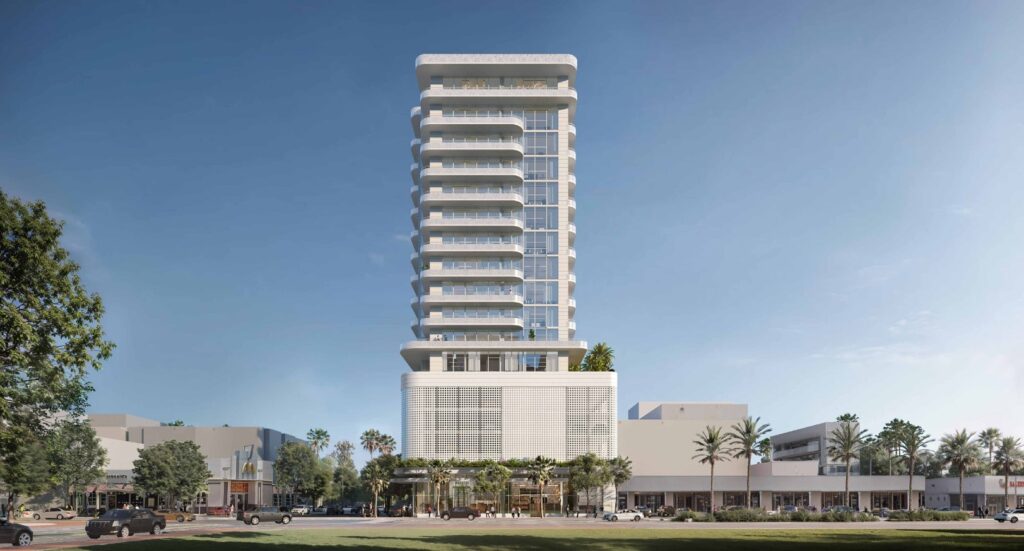
663 Alton Road
Although similar in scale and design to 1575 Alton Road, 663 Alton Road will be entirely workforce housing. All 92 units, or 100% of the building, will be priced at or below 120% of the area’s median income. Like 1575 Alton Road, the project is being developed by Crescent Heights and designed by RSP Architects. The tower will include 18,830 SF of clinic space along with 52 parking spaces, although plans are still preliminary. The building will rise 16 floors and measure 239 FT.
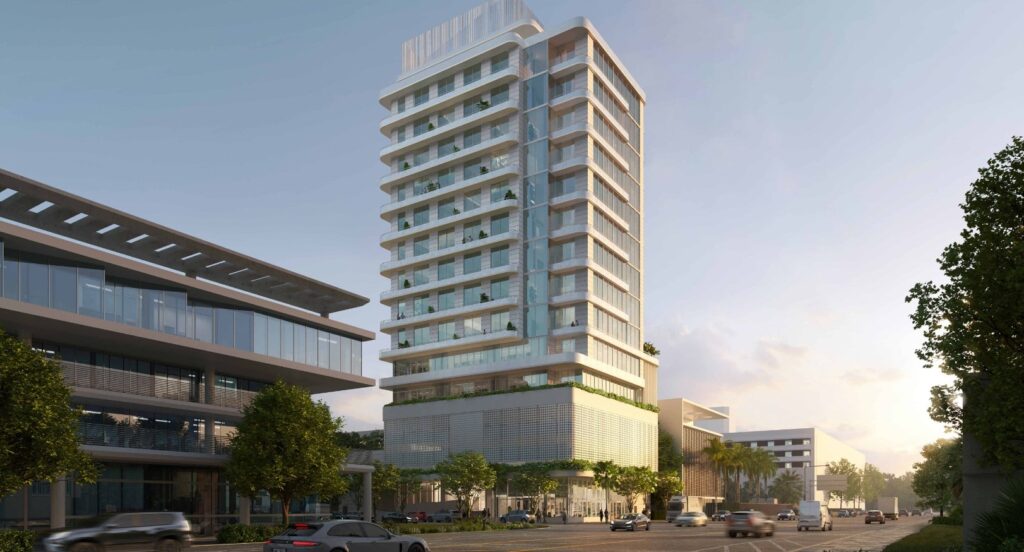
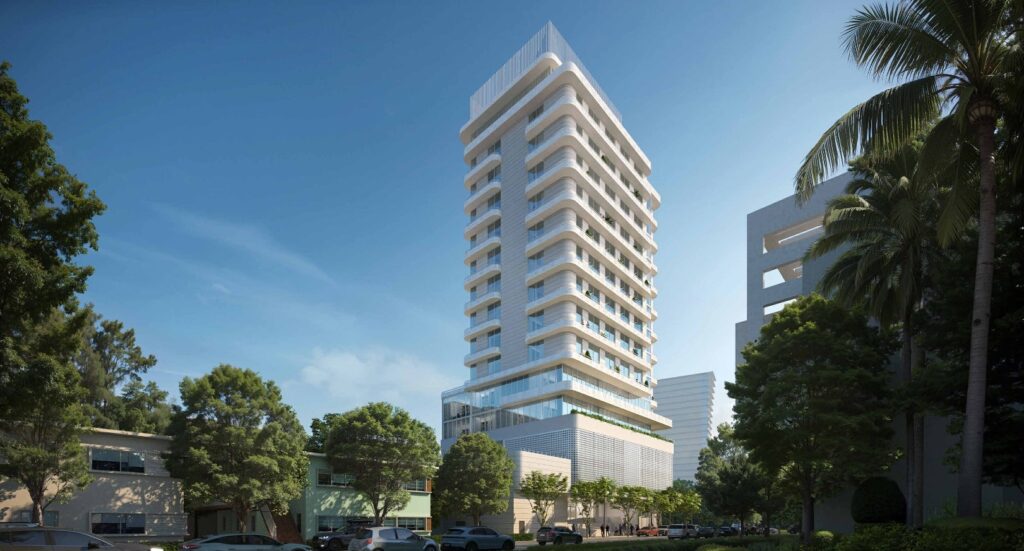
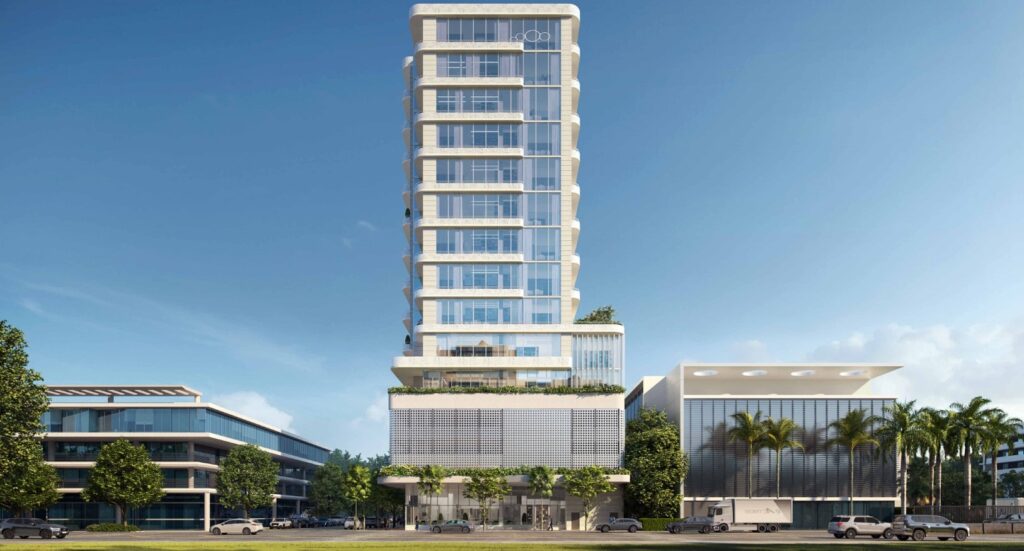
880 71st Street
Proposed by a partnership between Lefferts and Crescent Heights, the developers are planning a 100-unit building in Miami’s Normandy Isle neighborhood. 40 of the units will be designated as affordable housing, rather than workforce, though plans could change. Designed by Built Form Architecture, the project will feature robust pedestrian activation and 2,150 SF of ground-floor commercial space, along with 82 parking spaces. The building is set to rise 20 stories, reaching 228 FT in height.
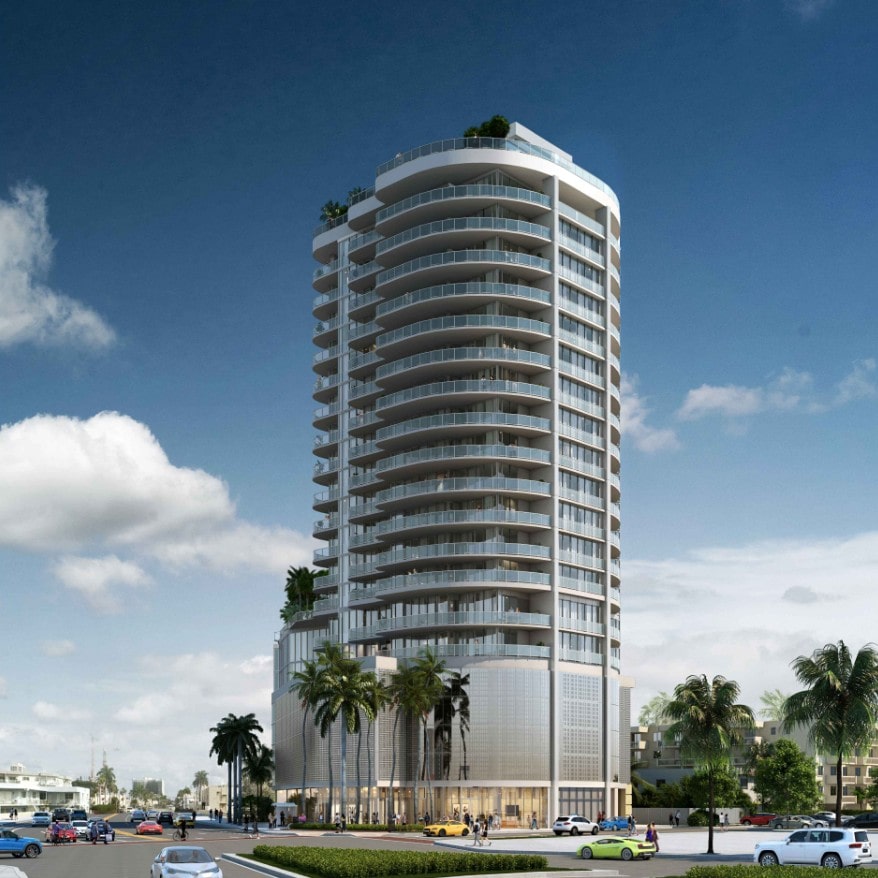
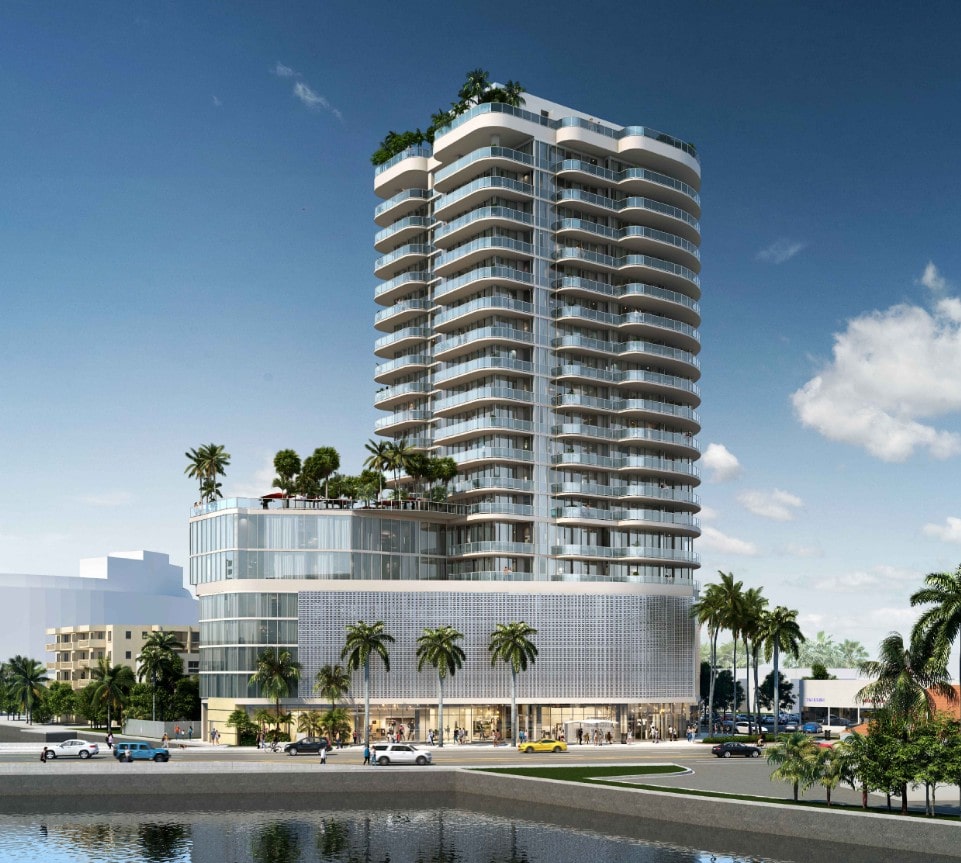
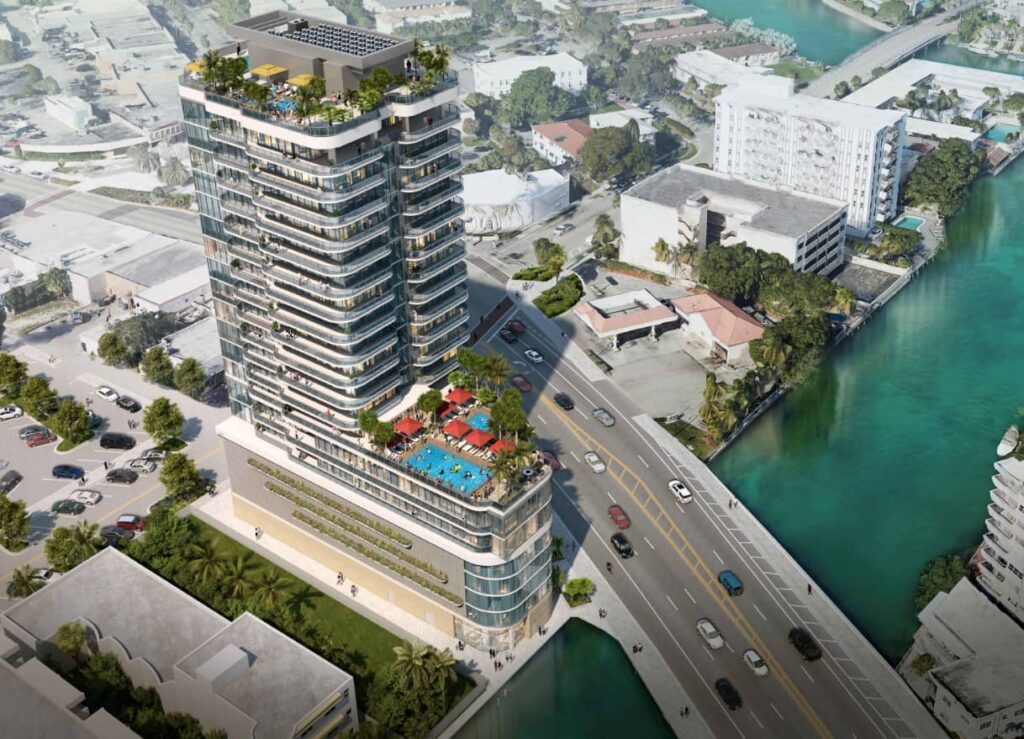
824 Alton Road
Designed to be one of the tallest buildings along Alton Road, and the project with the most floors under the Live Local Act, this Crescent Heights development will feature 120 residential units, 48 of which (40%) will be workforce housing. The building will also include a rooftop club, 2,931 SF of commercial space, and 119 parking spaces for residents and retail patrons. Designed by RSP Architects, the tower will rise 31 stories and reach 404 FT.
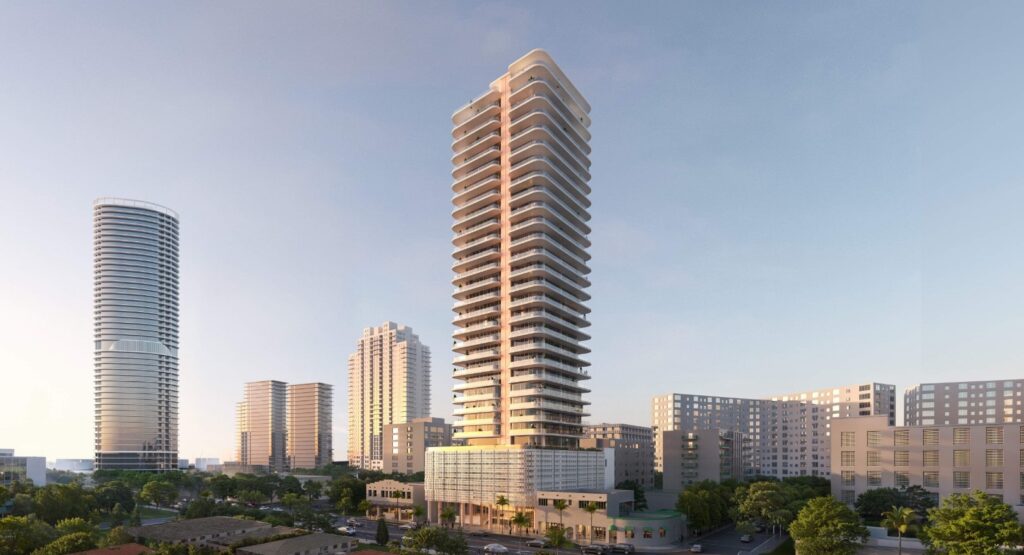

Clevelander Hotel Redevelopment
Amid ongoing battles over historic preservation, the Clevelander Hotel has returned with a revised development proposal. At last year’s Miami Beach Historic Preservation Board meeting, the developers presented a massing study reducing the tower to 15 floors: significantly shorter than their original plan. While the proposal considers eliminating the hotel’s liquor license in exchange for the height reduction, the Miami Design Preservation League remains “deeply concerned” about the building’s overall massing and how it fits with the surrounding historic structures.


Normandy Isle
Finally, LeaseFlorida is proposing a fully workforce-designated housing project. Plans call for 117 units, 3,000 SF of commercial space, and 71 parking spaces. Designed by Design Architecture Consultants, the building is planned to rise 8 stories, reaching 98 FT. The developer has noted that the Live Local Act was leveraged to expedite the project’s approval. The building will be located at 1960 Normandy Dr in the Normandy Isle neighborhood.
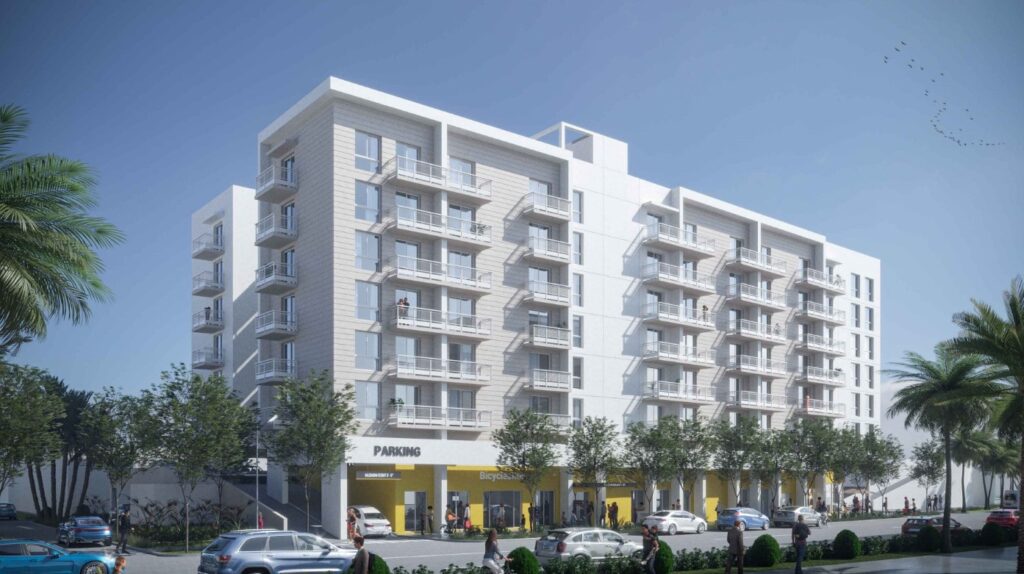
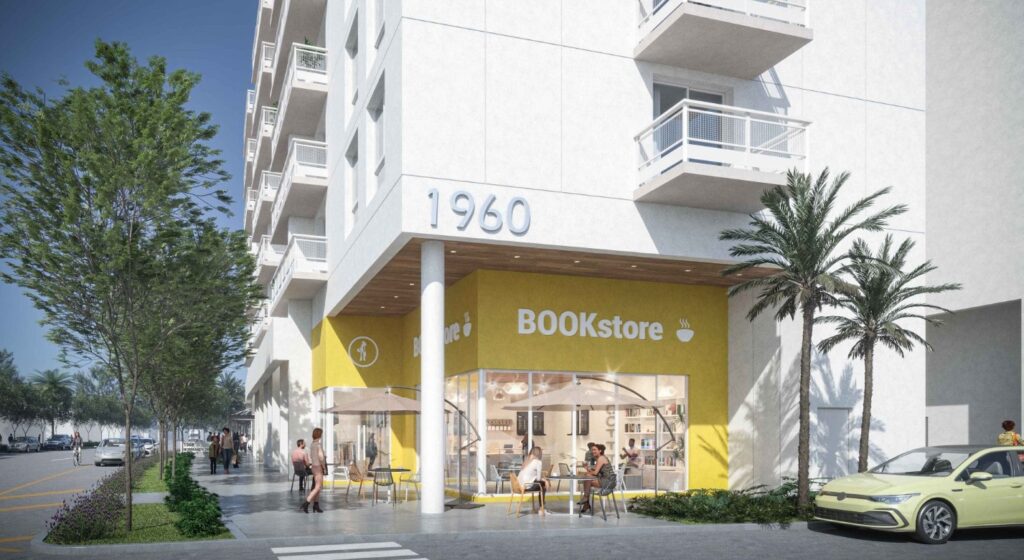
Explore the Projects:
Solutions and Concerns
Despite the controversy, Miami Beach’s hands are somewhat tied when it comes to altering development regulations. Recently passed in the Florida Legislature, SB 180 restricts counties under certain federal disaster declarations from imposing moratoriums on construction or redevelopment of affected properties. Miami-Dade is included because of Hurricane Milton. The law also prohibits local governments from passing “more restrictive or burdensome” amendments to comprehensive plans, land development regulations, or procedures for approving site plans, building permits, and more.
This means changes that are allowed under the Live Local Act, including changes to the minimum square footage of workforce housing units as long as it doesn’t interfere with the density, FAR, or height of a building, cannot be instituted due to SB 180. In other words, most Live Local Projects submitted cannot be ‘restricted’ until the window for SB 180 ends on October 1st, 2027. While Miami Beach still has leverage over projects like utilizing a historic preservation board, much power is lost.


Fabian Basabe, Florida’s State Representative for District 106, recently reached out to Floridian Development for comment. He mentions that while SB 180 mainly prevents new restrictions on development after a disaster, cities still have ways to manage growth responsibly. Local governments can coordinate infrastructure repairs, traffic improvements, and stormwater upgrades before approving projects: without violating the law. Basabe emphasized that it’s about timing and planning, not stopping construction to comply with SB180. It’s a new suggestion for the city, following multiple setbacks on development regulation.
While I understand we need to address workforce housing and other priorities at the state level, my responsibility is to make sure the impact to my cities is properly navigated. I have some grandstanding politicians who just want to make noise, but they do not do the work. This is how you do the work.
The sponsor of SB 180 confirmed to me that any federal disaster declaration from Hurricanes Debby, Helene, or Milton puts a county within the coverage of the law, not limited to certain FEMA categories. Miami-Dade is indeed listed because of the damage we had here.
That means cities like Miami Beach can use this law right now as leverage to pause or condition Live Local approvals. They can require underground infrastructure repairs, traffic and stormwater mitigation, and long overdue fixes before allowing more density.
Beach cities have ignored these fundamentals for years. The smart approach is to use every legal and procedural tool to secure responsible redevelopment, not just rubber stamp towers for the benefit of well-connected developers.”
To clarify: I am not suggesting an illegal moratorium or adding requirements in violation of SB 180. Cities still have lawful tools such as negotiating voluntary agreements with developers, coordinating infrastructure timelines, and using existing review processes to align projects with current capacity. This is about sequencing and coordination, not shutting projects down. If infrastructure work is already planned or underway, cities can prioritize completing those improvements before granting final approvals, or work with developers to integrate necessary upgrades into their plans. At the end of the day, I also represent the entire coast of Miami-Dade County, and comprehensive planning that balances growth with infrastructure capacity is in everyone’s best interest.
While politicians search for resources and solutions to address issues arising from the Live Local Act, Miami Beach has to proceed carefully. Laws like SB 180 and the Live Local Act leave room for interpretation, creating a legal gray area. Missteps could expose the city to lawsuits by developers or challenges that hinder progress. By carefully navigating the law, communicating with developers, and addressing neighborhood concerns, there is a possible future in Miami Beach for compatibility with the Live Local Act.
2 Comments
I’m not sure how I feel about all this development. What happened to character?
Amazing Article & New Map Feature. By Far Best Development & News Site In South Florida!